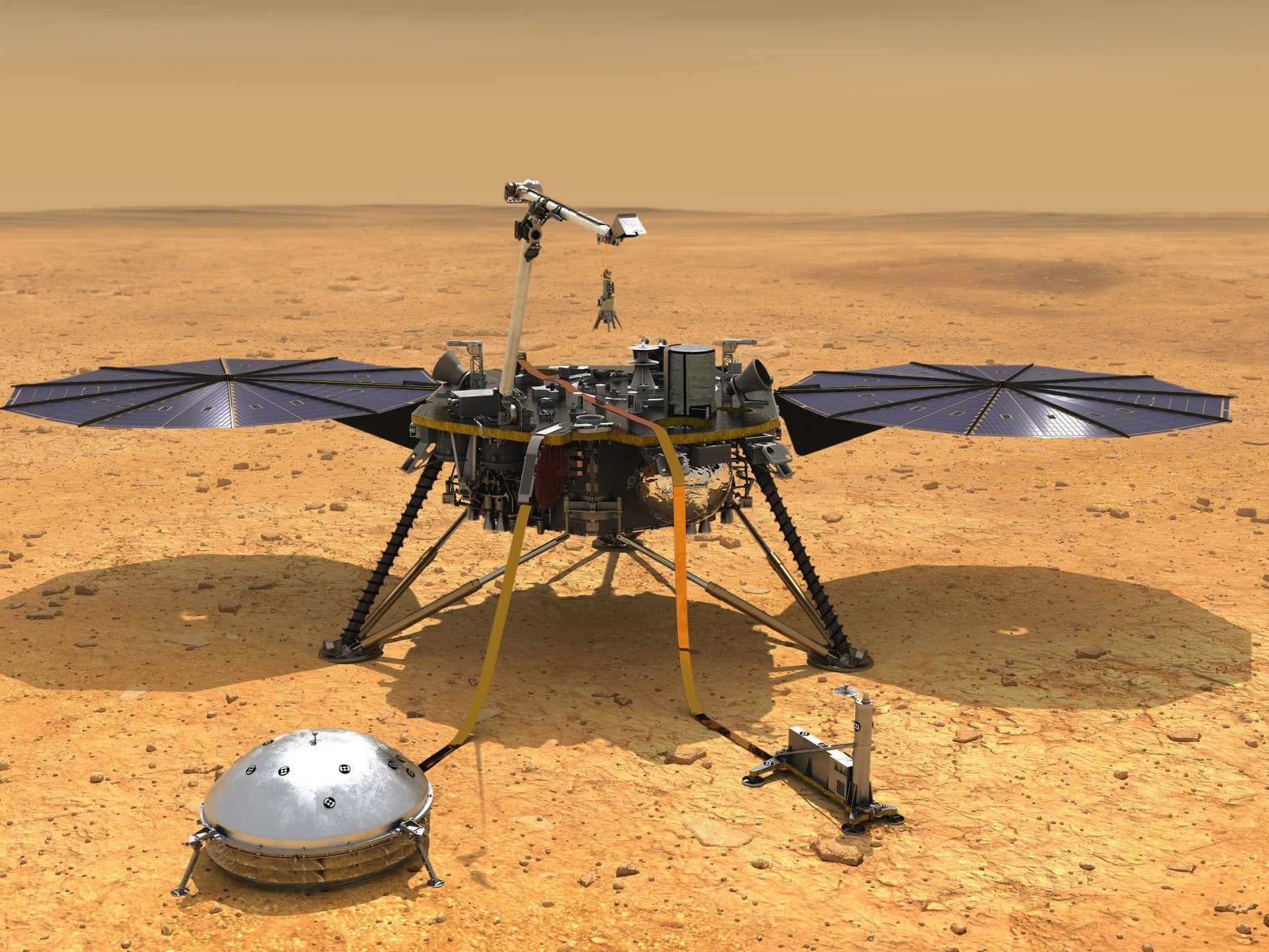Nasa InSight has successfully landed on Mars – so what now?
The lander has got to find its feet and get accustomed to its surroundings first

Nasa has successfully sent a lander to Mars. So what now?
Initially, not very much – at least not in terms of science. The InSight lander has to find its feet and get accustomed to its surroundings, first, working out where it stands in the harsh world of the red planet.
That is a months-long process of deployment and calibration. InSight's engineers will learn more about where the lander has dropped down, and make sure that all of its instruments are ready to do the job.
But after that, there'll be plenty to do. The InSight lander offers the chance to have an unprecedented look inside Mars itself, finally giving us clues about what it's made up of and what's going on in its interior.
That, in turn, could tell us not only where it came from but might give us a new understanding of how our own planet formed.
For now, InSight is charging up its batteries using the solar array that successfully unfolded after the dust had cleared from its perilous landing. Even in the first hours after its arrival, it sent back stunning photos of the Martian surface – and of itself.
Now mission control will get to learning about InSight's landing site. They'll be looking for the best place to deploy, particularly searching for somewhere it can stick its deep sensor into the ground to take readings of the underneath.
Once all of that is decided, engineers back at Nasa will build a reconstruction of the landing area to go alongside the already completely accurate clone of the lander itself they have down on Earth. That will allow them to practise on a precise recreation of the situation back on Mars, making sure that everything is perfectly calibrated and ready to get moving.
They'll make sure the InSight lander's arm can grab the sensors and equipment and place them into the right place on Mars. As well as putting them in place, they will also have to put a shield over the seismometer that keeps it from being damaged by the extreme environment of Mars.
All of that is incredibly important because the work up on Mars is so difficult: engineers liken it to playing a claw machine game except without the claw. And it is incredibly difficult, too, because messages take so long to be relayed to the lander – in the minutes they take to get between, the thing they have asked the lander to do has already happened, so they are unable to respond quickly.
That will take a matter of months. Once everything's in place, the heat probe will have to actually hammer itself deep down into the Martian surface, using special technology to dig five meters down.
Altogether, that's likely take as many as five months. After that, the actual science work that InSight aims to do will begin properly.
That will involve taking Mars's vital signs: feeling its temperature, checking its pulse and looking at its reflexes. Taken together, that will give an insight into the way the planet is made up and offer hints at how it came to be.
Join our commenting forum
Join thought-provoking conversations, follow other Independent readers and see their replies
Comments
Bookmark popover
Removed from bookmarks